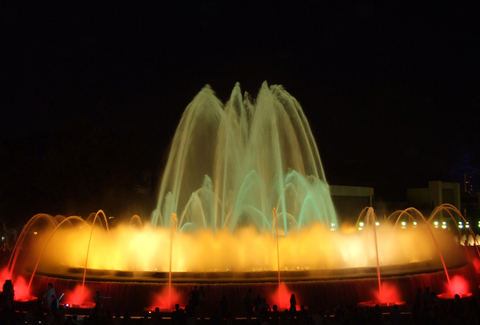Spanish Rhapsody

 I’ve had the good fortune to visit Barcelona twice in my lifetime – once in 1977, when I was 22 and about three months into half a year’s traveling all over Europe; and again in 1994, when I was there for a European pool show as editor of Pool & Spa News. On both occasions, I was in the city for six days – but the two adventures could not have been more different.
I’ve had the good fortune to visit Barcelona twice in my lifetime – once in 1977, when I was 22 and about three months into half a year’s traveling all over Europe; and again in 1994, when I was there for a European pool show as editor of Pool & Spa News. On both occasions, I was in the city for six days – but the two adventures could not have been more different.
It didn’t take me long to recognize what happened between 1977 and 1994: The Olympic Games came to Catalonia in 1992, and it was more than apparent that Barcelona was fundamentally transformed to make the event as spectacular as it could possibly be. What I noticed first was that it was much easier to get around in 1994, with new mass transit systems that took me wherever I wanted or needed to go with very little fuss.
As I moved around the city and revisited a few of the places I’d been before (including Antoni GaudÃ’s amazing Parc Güell) as well as some I hadn’t been able to reach on foot in 1977 (La Fundació Joan Miró and a nearby Picasso studio among them), I kept noticing that everything was utterly ship-shape and ready for inspection – as though the Olympics had been there two weeks earlier rather than two years.
I know I indicated my intention of sticking with American sites in these Travelogues, and I still plan to focus on readily accessible places to urge people interested in water to get out and see what’s available “locally.†But I felt compelled to break the pattern this time out, and for a simple reason: A friend came back from a trip to Spain and sent me some memory-sparking photos I haven’t been able to get out of my head ever since.
Specifically, there was a shot of the Magic Fountain of Montjuïc, which had been built for an earlier global event: the famous 1929 Barcelona International Exposition during which a glass-walled pavilion by Ludwig Mies van der Rohe created a sensation (and stands beautifully above its reflecting pool to this very day despite having been designed as a “temporary†structure).
Designed by Carles Buigas, who’d begun designing lighted fountains in 1922, the Magic Fountain was distinctly ahead of its time. In fact, many urged the rejection of Buigas’ proposal on the grounds that it was too ambitious. And they were almost correct, as work on the fountain was finished just a day before the exposition opened despite the collective labors of more than 3,000 workers, fabricators and artisans in the course of a feverish year of construction.
The fountain has had its ups and downs since then. Damaged during the Spanish Civil War in the 1930s, it was recommissioned by Buigas himself in the ’50s, augmented with new lights and sound in the ’80s and completely restored in anticipation of the 1992 Olympics. It was in this ship-shape condition when I saw it late in 1994 and still appears to be in great shape 18 years later.
If you find yourself anywhere in that part of the world, I urge you to visit Barcelona not just for the Magic Fountain, but also for everything else one of the great art centers in the history of the world has to offer. It’s a special place, and a beautiful fountain makes it particularly worth the trip.
Daylight video: It’s long but comes with great music. Click here.
Nighttime video: The lighting effects are spectacular. Click here.









